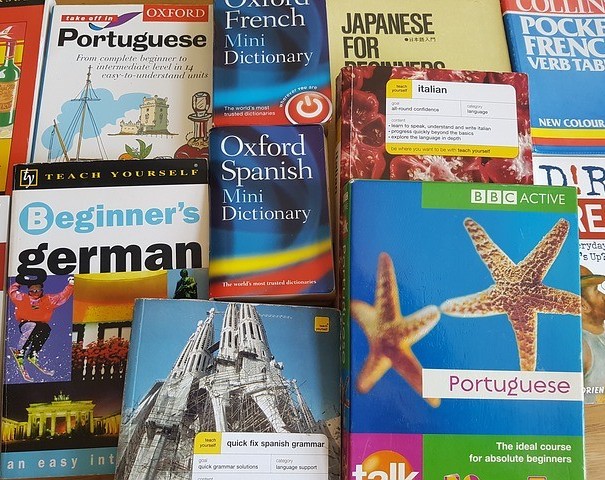
Have you ever gone to a foreign country??
If so, did you try to speak their language??
If so, then you know how exhilarating it can be to have a firm grasp on the basics and know how to communicate without fumbling over your words.
Before I moved to Germany years back, I study German on my own for three months. I was amazed when I got there, that I could say these new words in this brand new world, and people would actually understand me! Mind blown!!
Learning how to play guitar for beginners is a lot like learning a foreign language – the quicker you can get the basics down, the sooner you’ll be smiling from the rewards of effective conversation… and your audience will be smiling too!

Just picture it… people leaning in as you play… eyes wide… mouths slightly open… transfixed on what you’re communicating through your guitar and your voice…
So let’s get you to that same place musically-speaking. By knowing the basics of the Western music system, you’ll be empowered to communicate with a far more “informed” creativity. And that will translate into mesmerizingly interesting music.
… instead of being confused as to ‘what you mean’. ‘-)
Let’s set those fundamentals flying, shall we!
The Video Lesson!
Understanding music’s basic language empowers you to be a very accomplished player, and writer, if you so choose.

Just think of trying to write something in a language you barely know. That would be frustrating not only for you, but for anyone who suffers through trying to read your ideas!
So let’s make you “fluent” in music.
First off, if you have NOT already read and studied THIS POST ON DIATONIC CHORDS, go do that now.
Why?? ‘Cuz everything I’m going to talk about today is based on it. You don’t wanna miss out on any of the good stuff!!
Now that you have that proper preparation, watch the new video below that I filmed for you. I explain some cool music theory basics in a very easy-to-understand way.
Afterwards, I’ll meet ya back here to break it all down further with the written word. 😉
Open Up & Say… STRINGS!
Okay… Didja get all that? Did it make sense?
If not, let’s go through those same principles here in writing. Sometimes analyzing the same facts in a different way can really bring it all home.
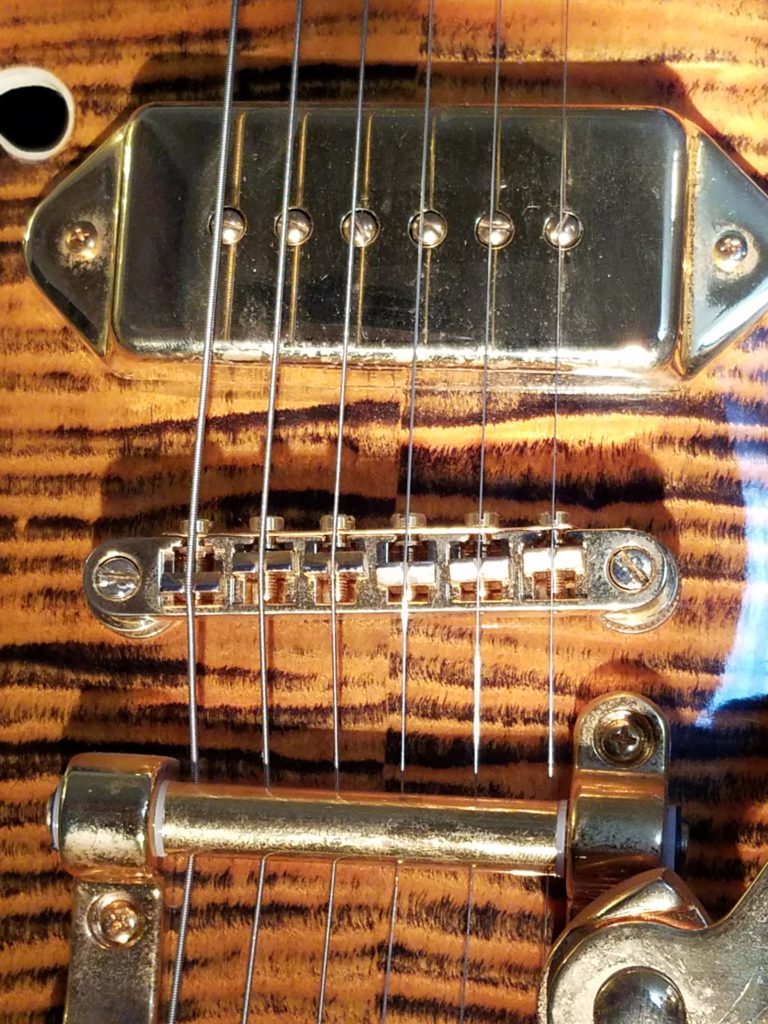
The first thing we talked about is fairly simple: the open strings of the guitar.
Those six strings are designated by the notes they sound when you pluck them.
Those notes, from low to high, are:
E – A – D – G – B – E
Notice that your lowest note, and your highest note, are both “E”.
To help differentiate between them, we call them the “low E” and the “high E“.
Related term you should be familiar with is “open chords“. These are chords you play that have one or more open strings in them.
Now, it always helps to use mnemonic devices whenever you’re trying to memorize something. With that in mind, let’s read through those six different acronymic phrases that will help us remember the open strings…
This first one is not one I came up with; my guitar teacher in L.A. shared it with me and I’ve continued to pass it on ever since:
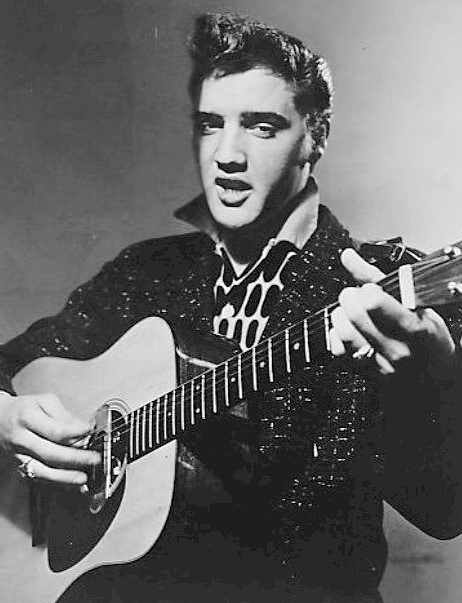
“Elvis Ate Drugs, Good Bye Elvis”
Sad but true. Let’s let Elvis’s lapse in judgment be a lesson to us all. Stay away from drugs, folks!
Next are some phrases I invented, for students of varying ages, over my years of teaching:
“Enough Artistic Discipline Guarantees Brilliant Expression!”
“Every Aardvark Digs Grubs Before Eating!”
“Extending Aragorn’s Defense, Gandalf Battles Evil!”
“Eating Avocados Delivers Great Body Energy!”
Or finally…
“End All Dumb Garage Band Excuses!”

My favorite is that last one. It cuts right to the quick of any excuse a student might have for why he or she did not practice.
Just like the old famous adage says:
“Excuse me – how do you get to Carnegie Hall??”
“Practice.” Lol
Diatonically Speaking…
Understanding song KEYS empowers you to be a very accomplished musician in many ways: writing; improvising; comping; modulating; arranging.

Not understanding them, though, will leave you guessing most of the time at what’s really going on in any song.
And do you know what that does?? It increases the odds dramatically that you’ll succeed at one thing really well… making MISTAKES!
I’m going to assume that you’ve already read and studied the post I mentioned above. If not, you could get real confused quickly in the next few moments… 😉
Let’s review, in a nutshell, some of the more salient points from that post:
- Western music consists of 12 different notes.
- A key comprises 7 notes.
- Playing those notes in sequence is what we call the “major scale“.
- If we build a chord on each of the notes of the major scale, we get seven “right” chords for each key.
- We call them the 7 “Diatonic” chords for any given key.
- Those seven chords are either major (happy-sounding) or minor (sad-sounding).
- Which ones are which? Here is the breakdown:
- The ONE chord is MAJOR
- The TWO chord is minor
- The TWO chord is minor
- The ONE chord is MAJOR
- The ONE chord is MAJOR
- The TWO chord is minor
- The TWO chord is minor (& diminished)
Once you’ve successfully committed all those facts to memory, you can easily do what I did for you today: write a simple song using the seven diatonic chords of a certain key.
If all of this seems as comprehensible as watching the movie “Brazil” while under anesthesia, fret not (pun intended!). Just read the posts again, watch the video above again, read the posts again, watch the video above again…

You get the picture. We’re human. Humans learn by repetition. And don’t worry, … this won’t take long.
Also, most things become a lot less ambiguous when we try to do them ourselves and put knowledge to use in our own day-to-day actions.
So, as you practice guitar, just think on these things and try practicing them.
Don’t get uptight about it; just relax, have fun, and play to enjoy yourself. As you keep coming back to these theory concepts the fog will clear, and pretty soon… all that anesthesia will be just a dream.
Kind of like “Brazil” was. Lol
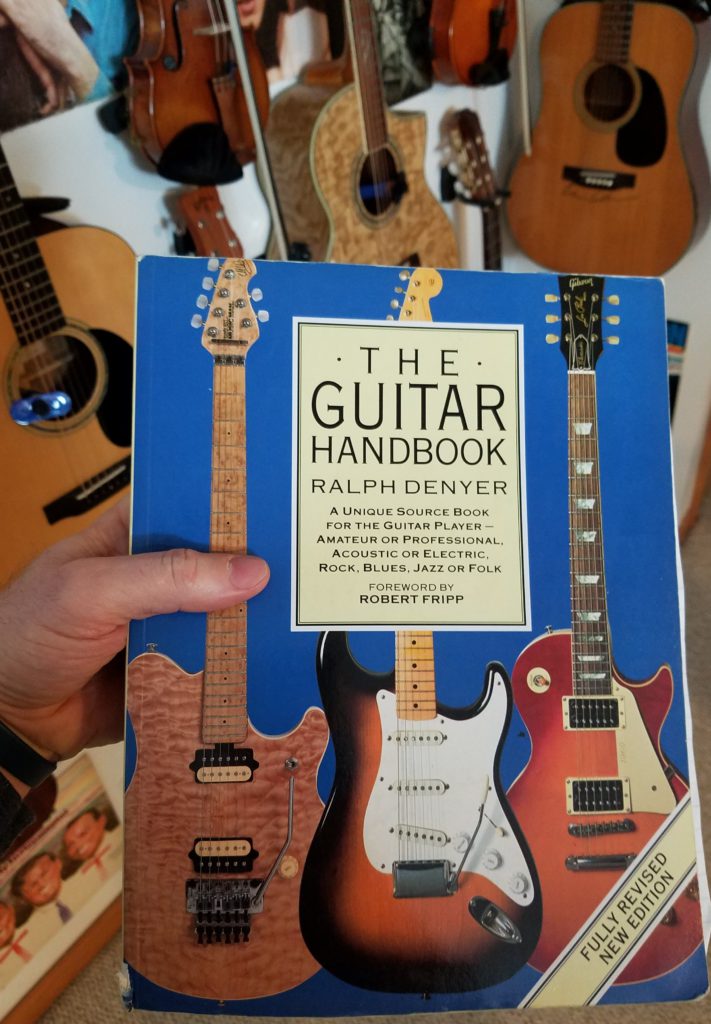
By the way, if you want an excellent resource that clearly reinforces what I’ve taught here today, plus a LOT MORE, pick up my favorite guitar instructional book, called “The Guitar Handbook” by Ralph Denyer.
I first got this sometime around 2002 and I have referred to it countless times.
It’s chock full of awesome pictures, diagrams, and clarifying diagrams that I’ve shared with my students literally hundreds of times.
You can see from this pic below that I have dozens and dozens of instructional books in my music library…
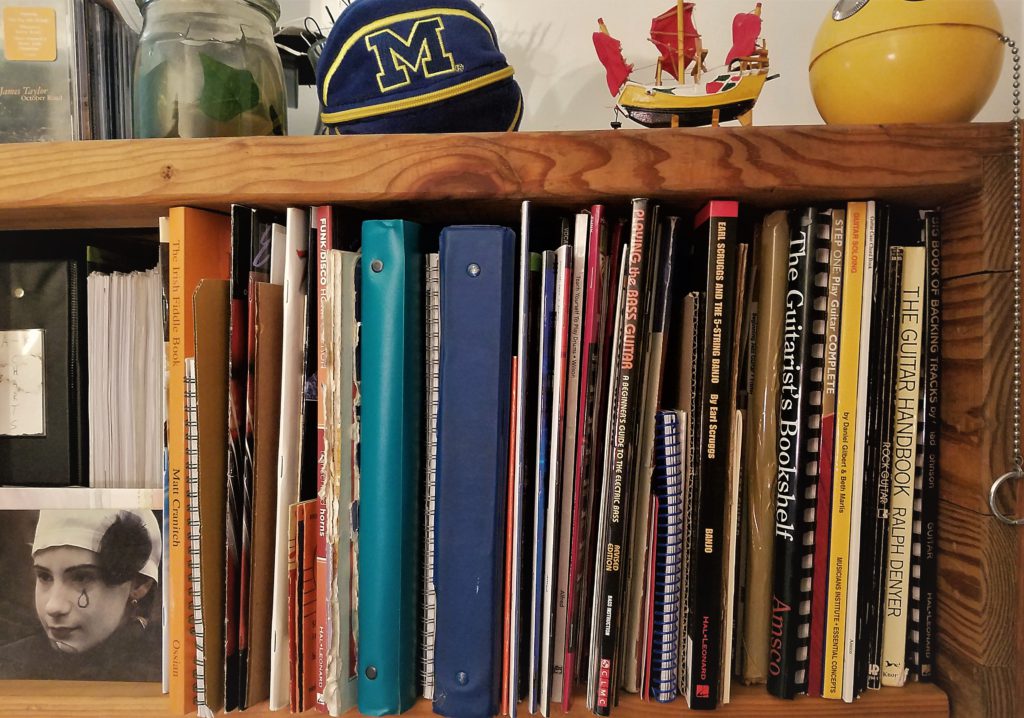
Ralph’s is my favorite. That’s saying a lot!
The Logical Song
Yes, I’m a Supertramp fan, but, no, this is not that! 😉
The song I wrote & sang for you in the video, called “This Is How It Sounds”, uses all seven diatonic chords in the key of C.
The key of C is the easiest key to learn, because it has NO sharps and NO flats in it.

Those chords are:
C, Dm, Em, F, G, Am, Bdim

If there are any of these chords that you haven’t learned yet, do so this week. Here are the grids for each chord so you can learn the fingerings:

Then, play along with me in the video until you can play that song with no issues, no hiccups, no stops or drops, from beginning to end.
At that point, guess what?! You will be a BOSS and very proficient in the key of C!! Which is a GREAT start at guitar as a simple pastime/hobby, or even further… into a very satisfying music career!
Follow the Bouncing Ball…
Here are the lyrics to the song, by the way, so you can understand what theory I’m teaching you, as WELL as sing along at the top of your lungs, telling the WORLD you are “key-of-C-literate”!!
“This is how it sounds, this is how it sounds
To use 1-5-4 in songwriting!
Yes, this is how it sounds, this is how it sounds
To use 1-5-4 in songwriting!
And with the minor 2, and the minor 6
The minor 3 will sound even better in your mix.
Yes, with the minor 2, and the minor 6
We can move on to the 7 chord
WE call di – min – ished!
So THAT is how it sounds, THAT is how it sounds,
To use all KEY chords in songwriting!
So THAT is how it sounds, THAT is how it sounds,
To use all KEY chords in songwriting!
They’re called ‘Diatonic’
Yea, those chords are ‘Diatonic’!”
No, Not Google Chrome… CHROMATIC!
Now, if you want to move past the key of C, into the other wonderful keys available to you, you’re going to have to memorize a SIMPLE map – it’s a list of all notes available to us in music. It’s called the Chromatic Scale, and you can start it on any note, anywhere on the guitar neck.
It goes like this:
A A#/Bb B C C#/Db D D#/Eb E F F#/G G G#/Ab
Here’s a graphic of it if your more of a visual learner:

Memorize this, and you can name the note that’s on ANY fret of the guitar! Plus, you’ll be WELL on your way to understanding music in a more creative, productive fashion.
To make this easy to practice, just like in the video, start on your “A” string, like where the alphabet starts.
Play the open “A” string, then play up towards the guitar body, one fret at a time, while saying what note it is out loud.
The notes will follow the Chromatic Scale map, just as they would on ANY and ALL Western instruments.
Once you reach the twelfth fret (where there are ‘double dots’ on most guitars) you know you’ve gone through the whole scale, and it’s starting over.
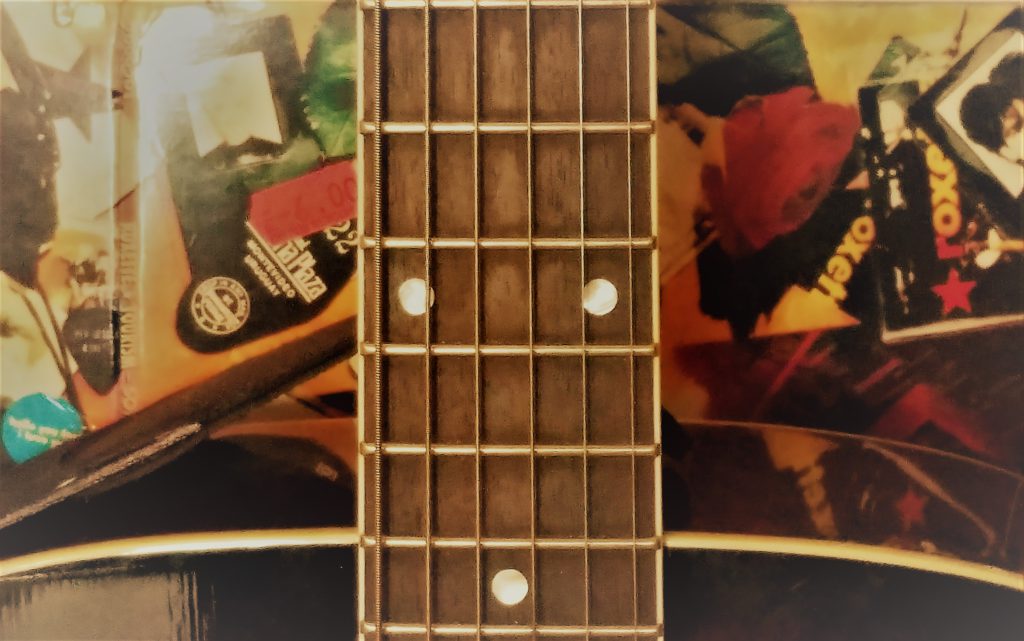
To test yourself further, and really burn it into your memory, practice saying the Chromatic Scale out loud as you start with all the OTHER open strings, and ascend chromatically up the neck to the 12th fret.
Soon enough you’ll not have to consult notes again on this topic – trust me!! ‘-)
YOU GOT THIS!!
Okay, enough mind expansion for one day!

I know it might seem like a lot, and that your head’s gonna explode, but that’s only ‘cuz it’s probably the first time you’ve heard any of this. The bewilderment won’t last, I promise!!
Continue to take all this in, bit by bit, and you will grasp it!! It’ll be like remembering your name, or your favorite song, or that dumb thing your best friend did a while back that still makes you laugh!
Yes, in less time than it takes to say “Enough Artistic Discipline Guarantees Brilliant Expression!”, you’ll be more “key-literate” than most bands on the radio.
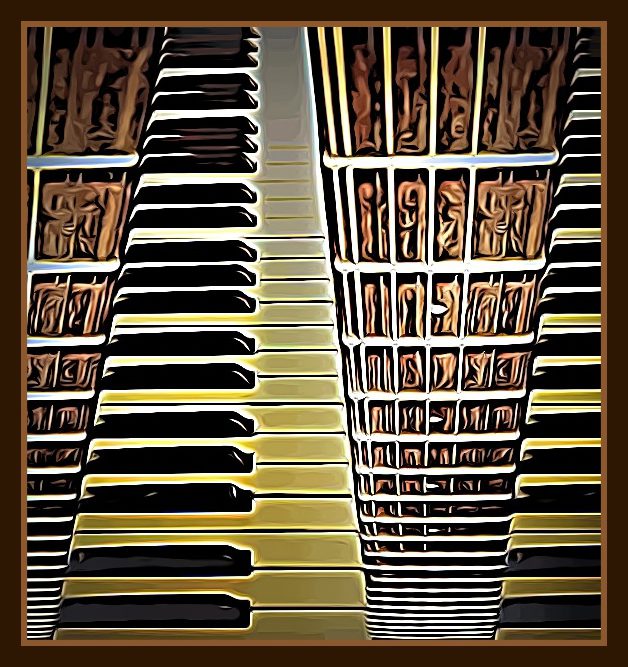
Come to think of it, I believe I could re-string my whole guitar in the amount of time it takes to say that. LOL
Thanks for dropping by. We’ll continue to share our take on how to play guitar for beginners in upcoming articles & videos, so stay tuned.
Until then, keep your guitar out, in your hands, and with all the frequency you can carve out of your schedule…
… go… make… sounds!!
Teaj

You are doing what you CAN, Nethan – that’s what’s important. You don’t have to invest a lot of money to get good at something… you just have to put TIME into it. Practicing. Testing. Trying. With all the many tutorials online these days, you can be a guitar GENIUS in little time if you focus and are determined. Keep up the good work. You are most welcome here!!
Very helpful tutorial shared by you. I am a beginner in playing guitar. I have just started with an old guitar of my Dad. I have repaired the guitar by installing custom guitar tailpiece. I was looking for some tutorial and I am glad that I have found your article. I can’t spend much money on playing the guitar. My family is not financially strong. So online articles and tutorial videos are my teacher.
Yes, Phranell86, it often takes watching and practicing something many times before it finally “clicks” in your brain. But it’s totally worth it!!
Keep going through our free lessons here and it’ll help you progress!!
Ohhh… that darn F chord!! LoL
Don’t worry, Seyi – you’re not alone! Almost all my student moan about the F chord when I first teach it to them.
The issue really comes down to hand and finger strength. Most open chords don’t take that much power to play them, but once you start trying “barre chords”, where your 1st finger clenches down with your thumb on the other side, it takes some real “cajones” to get every note ringing clear!
Keep following our guitar lessons on here and you’ll find lots of technique help though. Keep on rockin’!!
Fantastic, Seun!! Glad to hear you’ve got the burn to learn!! Lol
Do you have an electric or acoustic??
Great, Olalekan! Welcome! Hope you find the education here inspiring, detailed and helpful!
Make sure you read parts 1 – 4 also that came before this one. It all builds to give you a firm foundation for your playing skills! 😉
Thanks, Gracen! And we’re only at Part 5. Imagine when we reach Part 105!! Lol
Music doesn’t have to be complicated. If we take things in small bits, and have fun with each element, soon we’re playing with finesse and understanding without breaking a sweat.
Thanks for visiting!
As one who HAS put in the time & effort, I can vouch that it IS worth it all! Not too mention music is such a life-giving force that makes any moment richer and more memorable!
Thanks for this educative post, This post is for anyone who has thought about picking up the guitar but hasn’t yet, there’s no better feeling than learning to play an instrument and it happens to be that the guitar is my favorite instrument and with this post there’s no doubt that I’m going to be good at it. Thanks for sharing, I’m gonna keep following your post from pt 1 till the latest, Great job!
Hi Teaj, to be honest, learning a new language is not usually an easy task especially when one has become an adult, you must be very intelligent to have learnt German language on your own within three months. I really enjoyed reading through this post. You started from the very basic in chronological order down to acronymic phrases. You made learning of guitar less complicated with your well detailed informative piece. I have learnt new things about guitar from reading this post.
Those starting out in guitar will be so excited to read this article as it has both practical and theoretical information that can help one to improve tremendously.
I have tried playing a guitar several times before but had to quit along the way. I thought I could just play the strings on my own and produce a melodious tone, but I was wrong. After reading your article, I realized that I missed a basic step- Getting the basics of the guitar language. I now realize that I first needed to understand the keys and the sounds they produce. I am getting to understand the differences between a major scale and a minor scale gradually. I will definitely need to watch the video again to fully grasp the basics of diatonic, keys and notes.
Glad to hear that you see the RICHES I’ve outlined here, Divine13. If players really understand this theory, it’s SO powerful, and can make them such better players and writers than most of hacks out there undressing in videos today. Lol
Where is your school at? Would like to visit!
I am glad I came across this article, this is a great piece. I picked up the guitar about a year ago but I have not been that consistent with it as time would not permit me to commit to it full time. But so far I have enjoyed my learning playing the guitar even though I still consider myself a beginner. One of my major challenges playing the chords is the F chord, it’s quite challenging but I’m getting a hang of it. This your article just gave me a push to go pick my guitar and do more. Thanks
I grew up not mastering any musical instrument. Percussion would have been my interest but I realised I have a week shoulder. Now that I have decided its the string instrument , Guitar is my option and I have started taking classes on it. This article as simply raised my interest in guitar and I will definitely be visiting this site for more fantastic post like this on Guitar especially for a beginner like me.
>Hello. I own a music school and I have commented on several great article from this site previously. I never fail to emphasise the importance of staying away from drugs to my students and they have been able to comply this far. I will definitely be recommending this site and article as a guide for them. Thanks
I think half the problem is that people give up too quickly without learning the basics. This is not only with guitar playing but with everything in life. If one can create a firm foundation for what you are learning, then the impetus to keep learning and adding to your skills will be easier, as the foundation has been set.
This all takes plenty of time and practice, but I think the results will be well worth it.